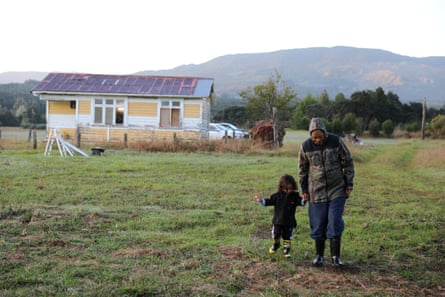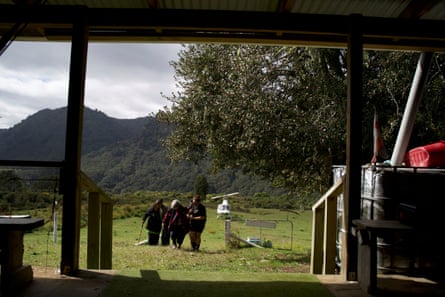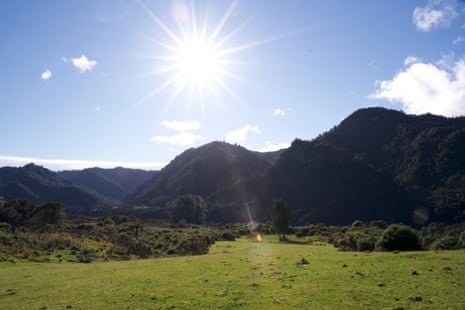Where my heart lives: A timeless plantation that ties Maori to tradition | New Zealand
W.The time has come for the Makiha family to demolish the house and they decide to bury it. They dismantled the crates and clapboards one by one and carefully placed them in the Hokianga soil like their ancestors.
“It is right to bury it,” says Rereata Makiha, who led the family through the ceremony. can be
“A homestead is like a mother, taking care of your family. It protects, feeds and nurtures your family. If you take care of your home, your family will take care of you.”
More than just a building, the House of Makiha, currently under reconstruction, is one of a constellation of houses that dot Aotearoa. new zealandOften understated and sometimes surprisingly remote and inaccessible, these homes have been passed down in Maori families for generations, linking their lineage to their ancestral sites. .
Some places can only be reached by boat, helicopter or a few kilometers on foot, while others are transformed urban enclaves around them. For many families, they represent more than physical shelter. [families] and land.


Director/Producer Kimiora Kaire-Melbourne follows the journey of the Makiha family and other untold stories of farmers. New Fakata documentary seriesexplores the importance of six Maori families to different generations and the efforts to save them.
Kaire-Melbourne states that “tūrangawaewae” is the most accurate word to describe the importance of land and home. Maori View of the world:”[It] Literally means “where your feet stand”.
“We felt it was time for these farmhouses, now over 100 years old, to be recognized for the role they played in keeping Maori as a whole connected to Turangawae and their homeland.”

Many Māori families maintained their homesteads against waves of colonization that saw vast numbers of Māori driven from the land. By 1920, only 8% of New Zealand’s land remained in Maori possession, down from his 80% just 60 years earlier. The change of ownership heralded a dramatic demographic shift as thousands flocked to the city in search of paid work. From the mid-1930s to the 1980s, Maori migrated from about 80% rural to about 80% urban, with Teara’s history calling him “one of the fastest rates of urbanization in the world.”
“Maori are not a homogenous group. We are all very different and have different life experiences. I think people had a hard time reconnecting or didn’t have that connection. [to the land]says Kyle Melbourne. “It’s not about forgetting who you are, it’s about losing it.”

For some families, maintaining a home takes years of hard work. “When you see it, you wonder why we tried to save the house,” Tanguimaioakmatua Moring says of the Ponga estate. “The repair was in poor condition.”
Moring, who became a grandmother, was born in a small bedroom near the front door. The patterned wallpaper behind her is adorned with drawings and photographs of generations of her ancestors, including Koro, who made it. The fact that it’s still here, she says, is the result of 20 years of work, fundraising, and committee meetings to maintain her home and restore life.
“It’s a sense of belonging”
“I felt like it was my job to make sure the house was saved,” Moring says. “I really decided to go home.” For her, returning to Ponga’s home required a helicopter ride to Palinui land in remote Hokianga. “It was very emotional to come home,” Moring says. “It’s always like that when I get home. [ancestors] be. And I feel that coming home is really coming home for them. ”
In recent years, in the face of Covid-19 pressure, rising costs of living, and a housing crisis that has squeezed many new buyers out of the market, some of these homes have grown in importance to a new generation seeking a place to call home. . .
For the Makiha family, the pandemic has spurred plans to rebuild the farm’s land, creating a future home for future generations. “The impact of Covid, the impact of the economic crisis we have all endured, and the longing to return to our wēnua was the reason and purpose. I did,” says Makiha Maihi.

Kaile Melbourne’s own family estate in Ruatki, she says, was part of the inspiration for the documentary. It was maintained by her own Koro so that his great-grandchildren could always have a home to return to.
“For generations Maori have felt the need to leave their tribal territories. Some of the homesteads are vacant or abandoned.
For the families she documents, it helps form the foundation of their lives. “I think that’s what Homestead really does. It has its own Wailua. [spirit] What you feel when you come to Whenua.
https://www.theguardian.com/world/2022/oct/22/where-the-heart-lives-the-enduring-homesteads-tying-maori-to-their-heritage Where my heart lives: A timeless plantation that ties Maori to tradition | New Zealand
